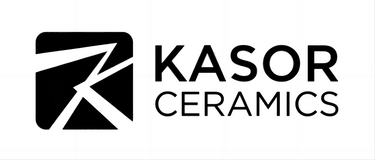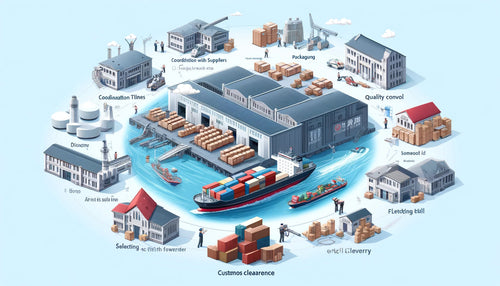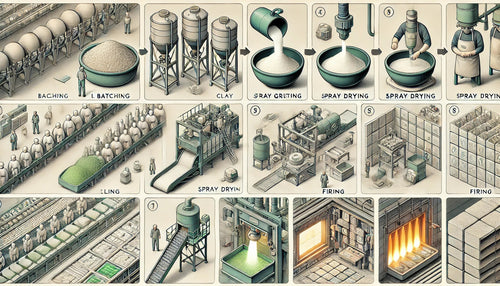Exporting porcelain tiles from China involves a series of steps and considerations to ensure a smooth and successful process. One efficient way to manage exports, especially for smaller orders, is to consolidate shipments from multiple suppliers into a single container. Here’s a comprehensive guide on how to navigate the export process and achieve consolidated shipping:
1. Understand Your Export Requirements
Before you begin, it's essential to understand the specific export requirements for porcelain tiles. This includes necessary documentation, quality standards, and compliance with both Chinese regulations and the destination country’s import regulations.
2. Identify Reliable Suppliers
Finding reliable suppliers is crucial. Conduct thorough research and vet potential suppliers to ensure they meet your quality standards and can deliver products on time. Platforms like Alibaba, Made-in-China, and Global Sources can help you find reputable suppliers.
3. Negotiate Terms and Conditions
Once you’ve identified potential suppliers, negotiate the terms and conditions, including pricing, delivery schedules, and payment terms. Ensure that all agreements are documented to avoid misunderstandings.
4. Plan the Consolidation Process
Consolidating shipments involves coordinating with multiple suppliers to combine their products into a single container. This requires careful planning and communication. Here’s how to manage it effectively:
- Schedule Coordination: Coordinate with each supplier to ensure their production and delivery timelines align. This helps in avoiding delays and ensures that all products arrive at the consolidation point on time.
- Quality Control: Implement a quality control process to inspect products from each supplier before consolidation. This ensures that only high-quality products are shipped.
- Packaging and Labeling: Standardize packaging and labeling requirements to ensure consistency and protect products during transit.
5. Choose a Freight Forwarder
Selecting a reliable freight forwarder is crucial for managing the logistics of consolidated shipping. A good freight forwarder will:
- Arrange Transportation: Organize the transportation of products from each supplier to the consolidation warehouse.
- Manage Documentation: Handle all necessary export documentation, including invoices, packing lists, and certificates of origin.
- Consolidate Shipments: Oversee the consolidation process, ensuring that products from different suppliers are combined efficiently and securely.
- Provide Tracking: Offer tracking services so you can monitor the shipment’s progress and ensure timely delivery.
6. Customs Clearance and Shipping
Your freight forwarder will manage the customs clearance process, ensuring that all required documentation is in order and that duties and taxes are paid. Once the shipment clears customs, it will be loaded onto a vessel for export.
7. Monitor and Communicate
Throughout the shipping process, maintain regular communication with your freight forwarder and suppliers. This helps in addressing any issues promptly and ensures a smooth export process.
8. Receiving and Distribution
Once the shipment arrives at the destination port, your freight forwarder will manage the import customs clearance. After clearance, the consolidated shipment can be distributed to your warehouse or directly to your customers.
Benefits of Consolidated Shipping
- Cost Efficiency: Consolidating shipments from multiple suppliers reduces shipping costs by maximizing container space.
- Flexibility: Allows you to source products from different suppliers without waiting for full container orders from each one.
- Reduced Lead Time: Combines smaller orders into one shipment, reducing overall lead time and ensuring faster delivery to your customers.
By following these steps and leveraging the benefits of consolidated shipping, you can efficiently manage the export of porcelain tiles from China, ensuring high-quality products reach your customers on time and within budget.


